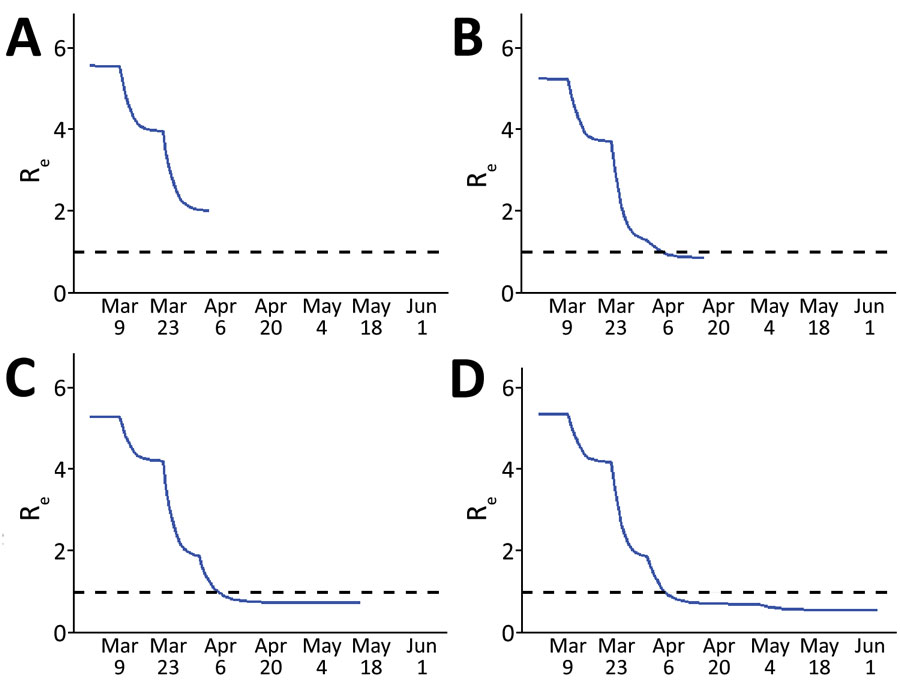Volume 27, Number 9—September 2021
Research
Estimating the Impact of Statewide Policies to Reduce Spread of Severe Acute Respiratory Syndrome Coronavirus 2 in Real Time, Colorado, USA
Figure 3

Figure 3. Estimated Re over time, Colorado, USA 2020, based on susceptible-exposed-infected-recovered models fit to data at 4 time points in the early months of the epidemic. The reproductive number was estimated from model output at the time of each fit. A) Fit 1 on April 3; B) fit 2 on April 16; C) fit 3 on May 15; D) fit 4 on June 16. Dashed lines indicate an Re of 1, below which the rate of new infections decreases and above which the rate of new infections increases. Re, effective reproductive number.
1Current affiliation: University of Maryland School of Medicine, Baltimore, Maryland, USA.
Page created: June 02, 2021
Page updated: August 17, 2021
Page reviewed: August 17, 2021
The conclusions, findings, and opinions expressed by authors contributing to this journal do not necessarily reflect the official position of the U.S. Department of Health and Human Services, the Public Health Service, the Centers for Disease Control and Prevention, or the authors' affiliated institutions. Use of trade names is for identification only and does not imply endorsement by any of the groups named above.